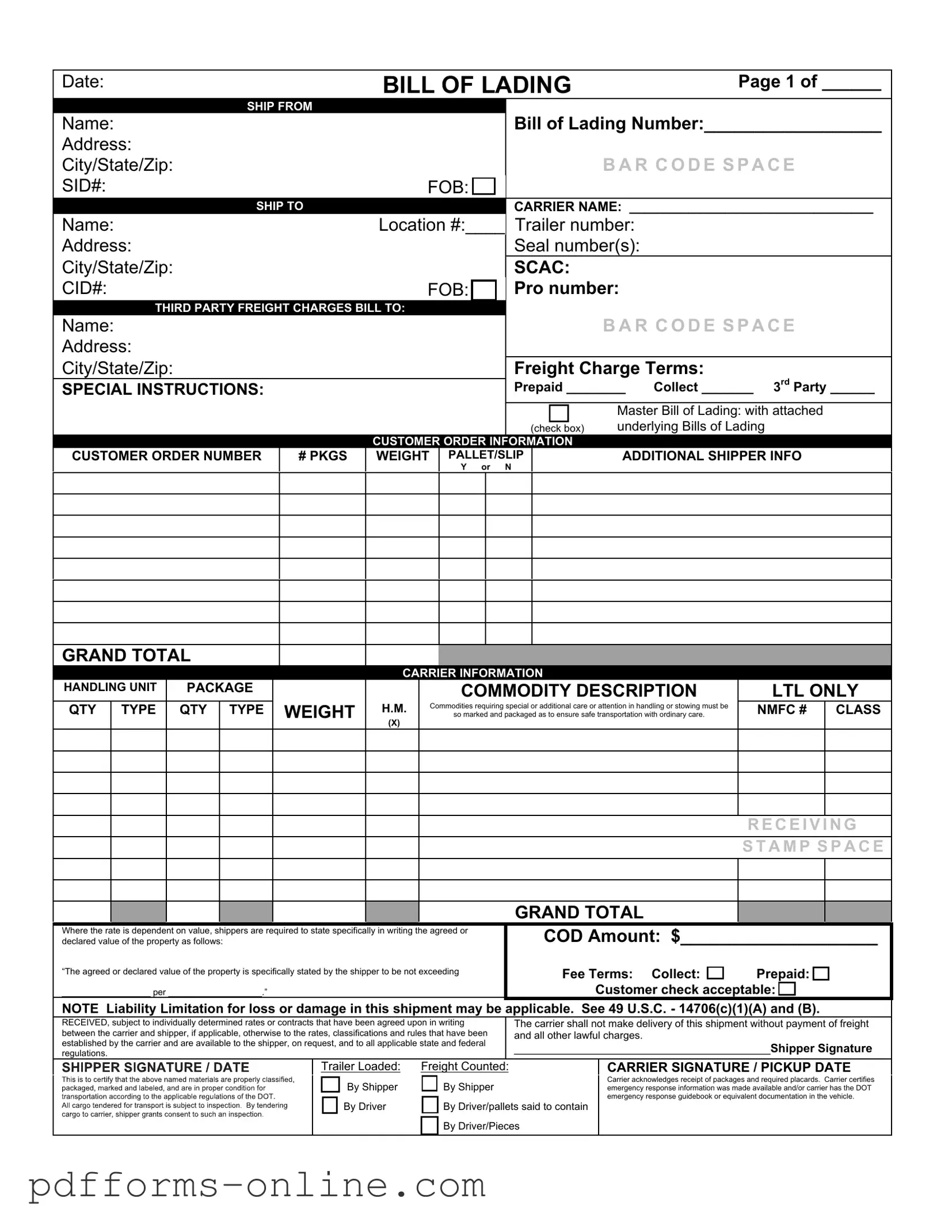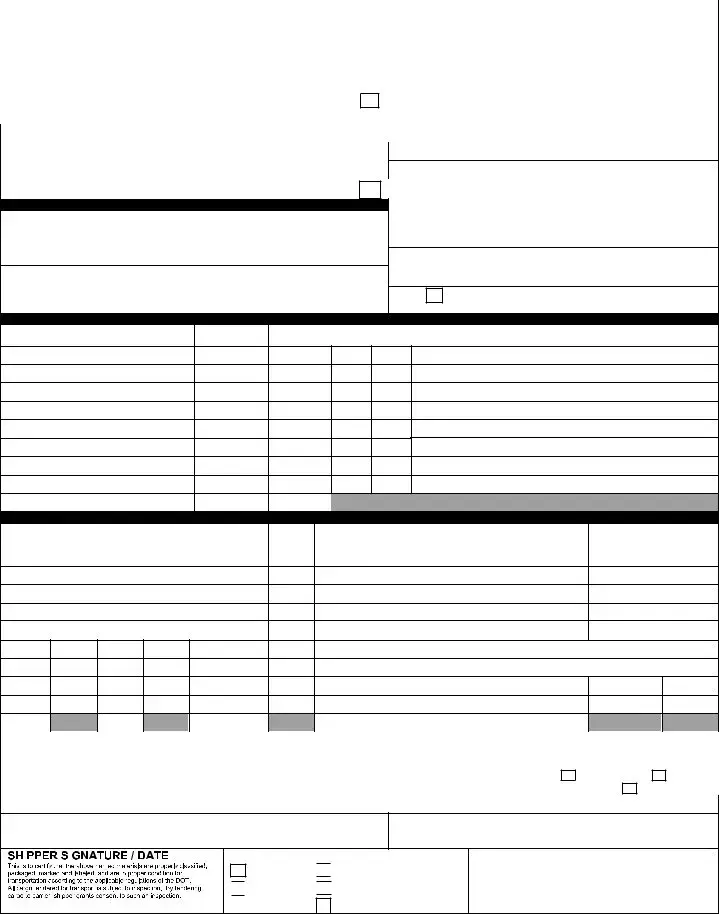The Bill of Lading is a crucial document in shipping and logistics, serving as a receipt for goods and a contract between the shipper and carrier. One similar document is the Air Waybill. Like the Bill of Lading, the Air Waybill acts as a contract for the transportation of goods, specifically by air. It outlines the details of the shipment, including the sender, recipient, and description of the goods. However, unlike a Bill of Lading, an Air Waybill is not a title document, meaning it does not confer ownership of the goods during transit.
Another document that shares similarities with the Bill of Lading is the Freight Bill. The Freight Bill is an invoice issued by the carrier to the shipper, detailing the transportation costs associated with moving goods. Both documents serve as records of the shipment and the terms of service. However, while the Bill of Lading focuses on the receipt and contract aspects, the Freight Bill emphasizes the financial transaction involved in shipping.
The Delivery Receipt is also comparable to the Bill of Lading. This document is issued upon delivery of goods and serves as proof that the recipient has received the shipment in good condition. Both documents confirm the transfer of goods, but the Delivery Receipt is used primarily at the end of the shipping process, while the Bill of Lading is utilized throughout the transportation journey.
Inland Bill of Lading is another document closely related to the Bill of Lading. This document is specifically used for domestic shipments that occur over land. Similar to the traditional Bill of Lading, it serves as a receipt and contract for transportation, but it is tailored for inland logistics, making it essential for domestic freight operations.
The Warehouse Receipt is akin to the Bill of Lading in that it serves as a document of title. It is issued by a warehouse operator to acknowledge the storage of goods. Both documents facilitate the transfer of ownership; however, the Warehouse Receipt is used in storage contexts rather than during the transportation of goods.
A Pro Forma Invoice is similar in that it outlines the terms of sale and shipment of goods. While it is not a shipping document per se, it provides detailed information about the transaction, including the cost and description of goods. Like the Bill of Lading, it helps ensure all parties are on the same page regarding the shipment, although it does not serve as a contract for transport.
The Shipping Order is another document that shares similarities with the Bill of Lading. This document is issued by the shipper to the carrier, directing them to transport specific goods. Both documents provide instructions and details about the shipment, but the Shipping Order is more of a directive, while the Bill of Lading serves as a formal contract and receipt.
A Certificate of Origin is similar in that it provides essential information about the goods being shipped. This document certifies the country of origin of the goods and is often required for customs clearance. While it does not function as a receipt or contract like the Bill of Lading, it is critical in international shipping, just as the Bill of Lading is.
The Export Declaration is another document that bears resemblance to the Bill of Lading. This document is required by government authorities for customs purposes when goods are exported. Both documents contain vital information about the shipment, but the Export Declaration focuses on compliance with regulations, while the Bill of Lading serves as a receipt and contract for transportation.
Lastly, the Import License is similar in that it is a document required for the legal importation of goods. While it does not serve as a receipt or contract, it is essential for ensuring compliance with import regulations. Both the Import License and the Bill of Lading are integral to the shipping process, as they help facilitate the legal movement of goods across borders.


 to certify that the above named materials are properly classified, packaged, marked and labeled, and are in
to certify that the above named materials are properly classified, packaged, marked and labeled, and are in proper condition for transportation according to the applicable regulations of the DOT.
proper condition for transportation according to the applicable regulations of the DOT.
 By Shipper
By Shipper
 By Driver
By Driver 
 By Driver/pallets said to contain
By Driver/pallets said to contain